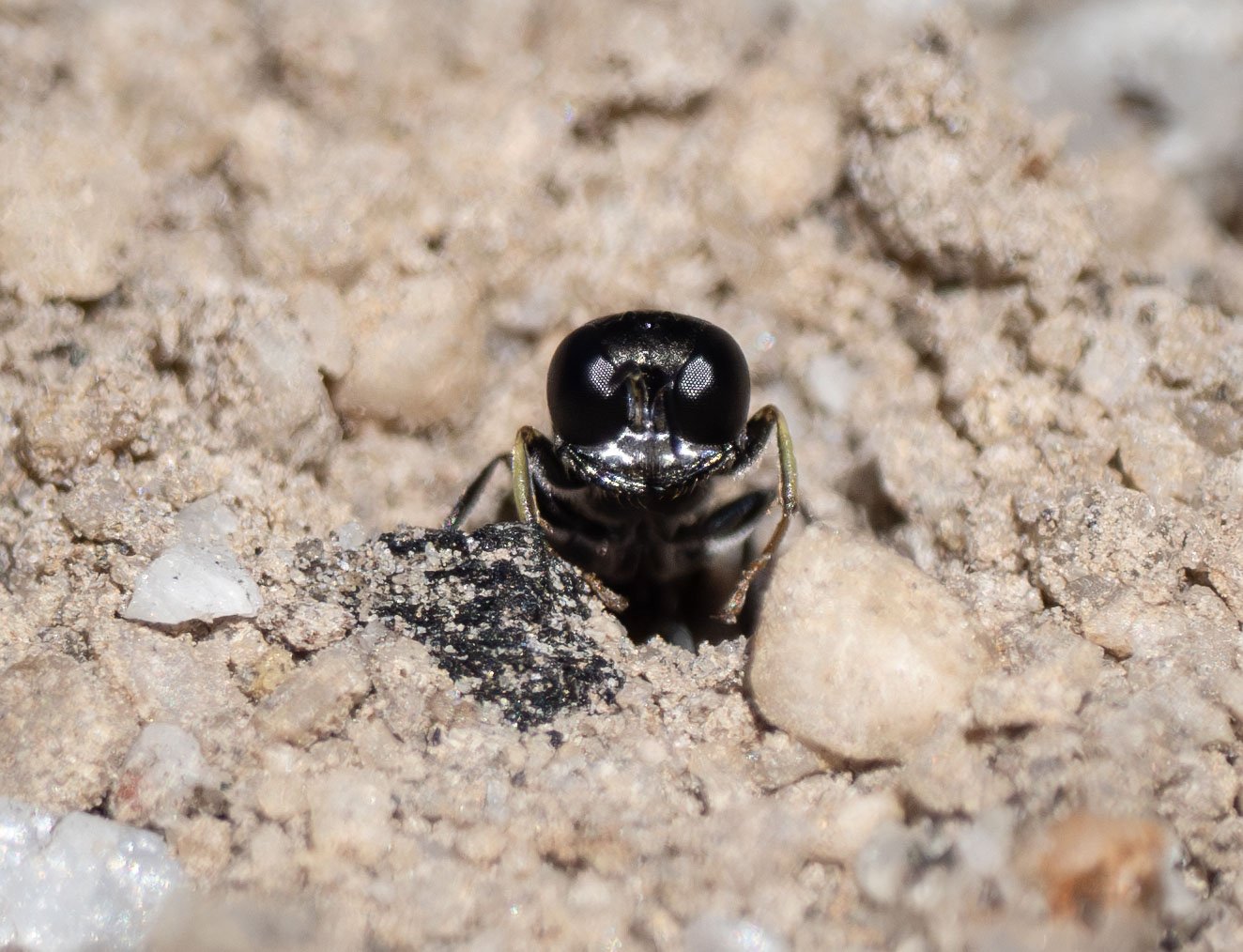
The nest site from 2022 is a flat patch of sandy soil … so this year I’ve been closely watching the area. The first wasps appeared mid August, soon followed by the first confirmed nesting activity. Here a female peers at me from the entrance to her nest.
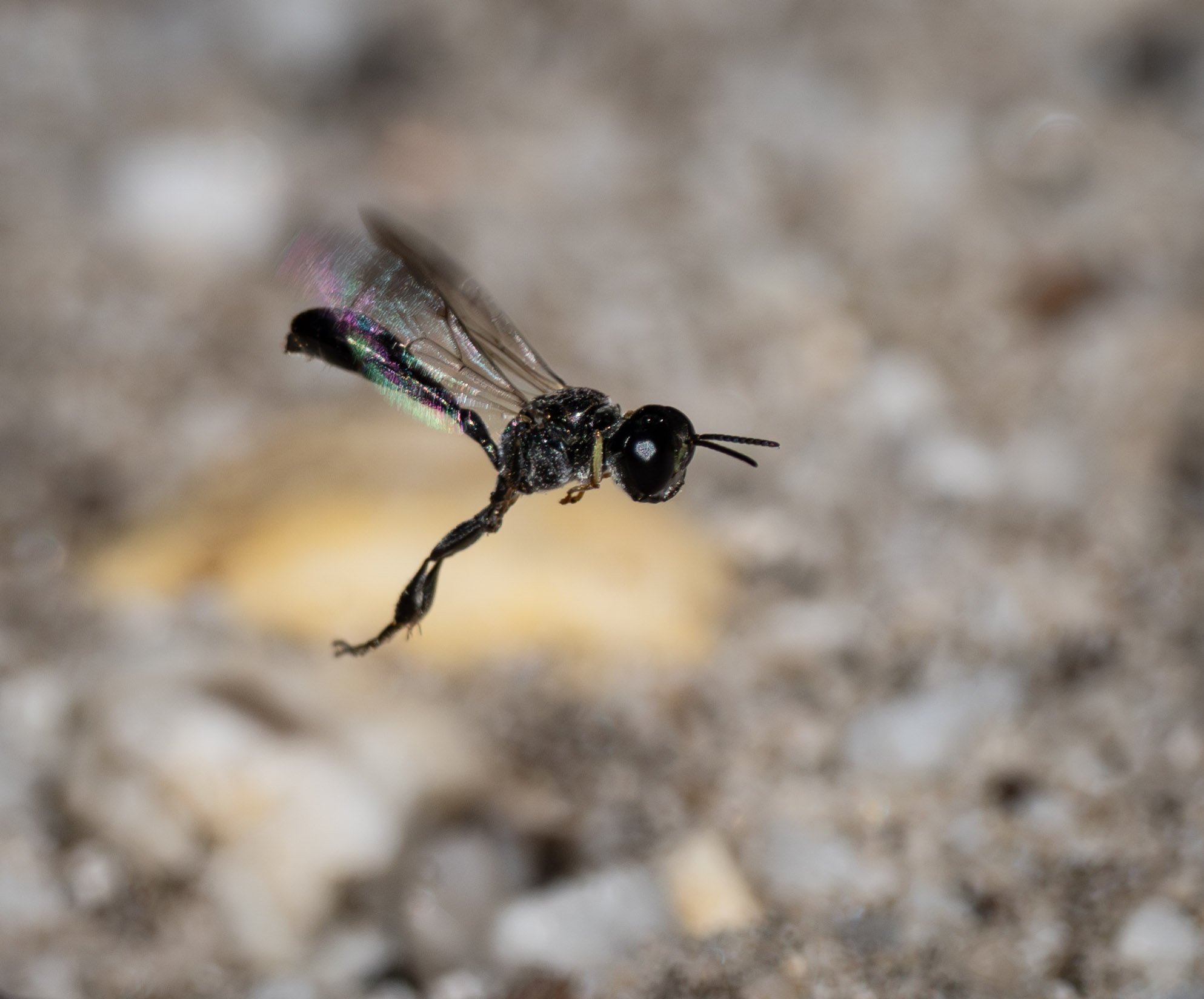
As this species was only previously known from one museum specimen, these images are probably the first ever taken of the living wasps. Or at least the first images that can be identified to species level. (‘feeling chuffed’)
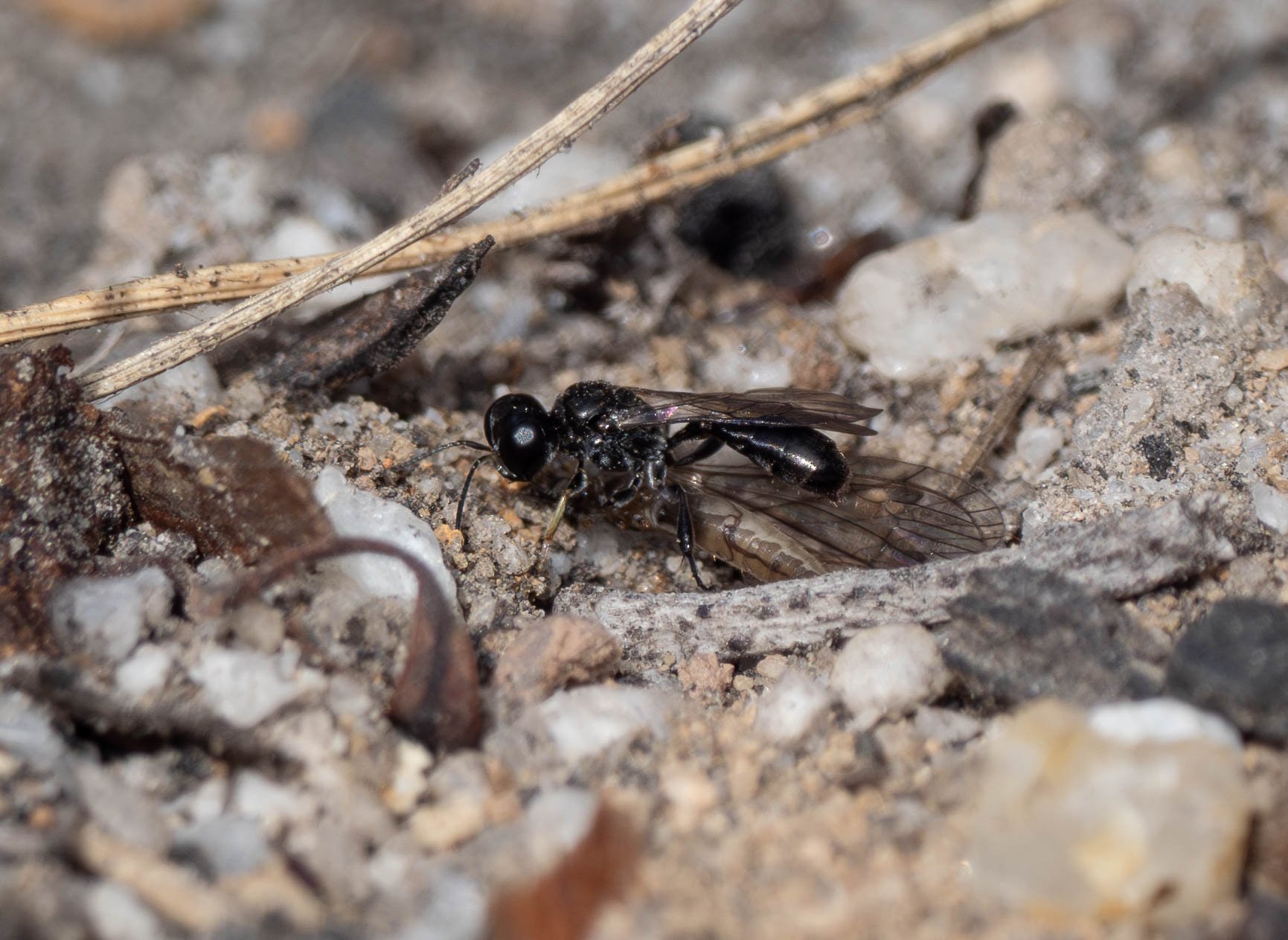
Females stock their nests with paralysed flies, food for their larvae. A variety of flies are targeted, but crane flies do seem something of a favourite. This fly is alive, but paralysed … and also legless! Crane flies have exceedingly long legs, and perhaps they simply get in the way during transport and storage. The wasps never seem to bother amputating other prey this way.
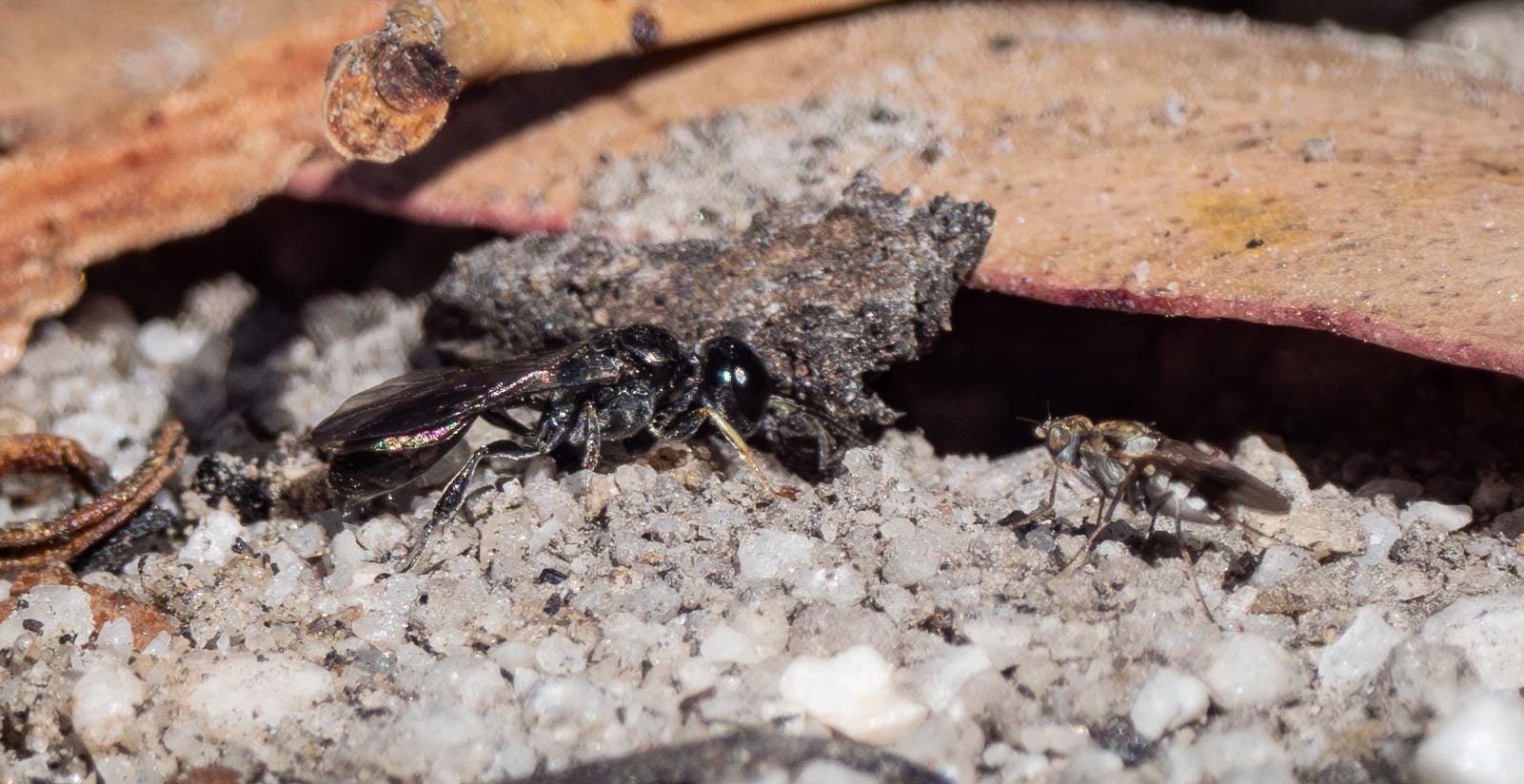
The very day that I first spotted nesting activity, and the opportunists had already moved in. The silvery fly watching the wasp’s every move is Apotropina … a known kleptoparasite of a variety of sand-nesting wasps.
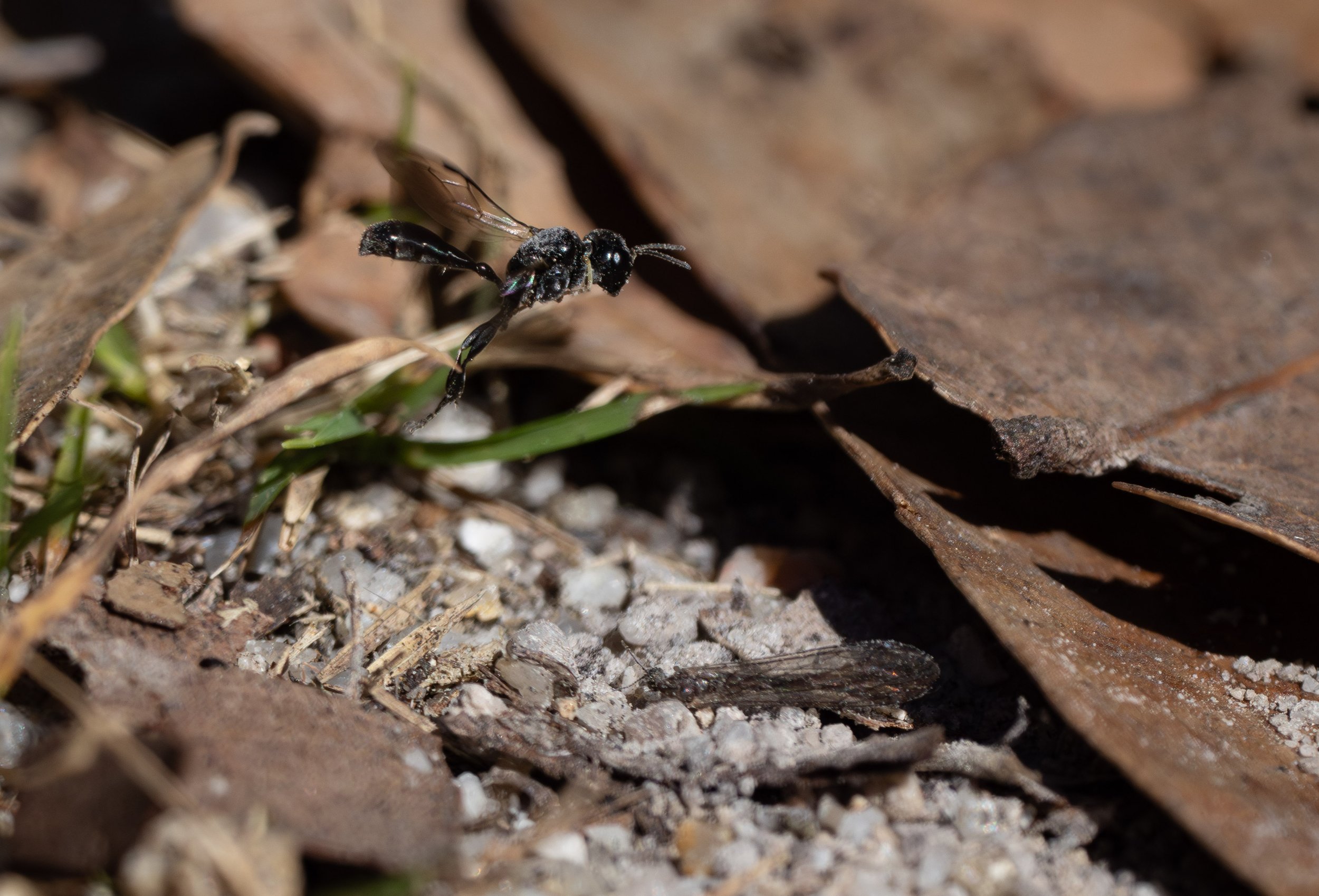
This particular female had her burrow opening under a leaf. But something was deterring her from entering this time. She deposited her legless and paralysed prey on the soil, then hovered about while peering under the leaf. At first I suspected a lurking predator … perhaps a wolf spider …
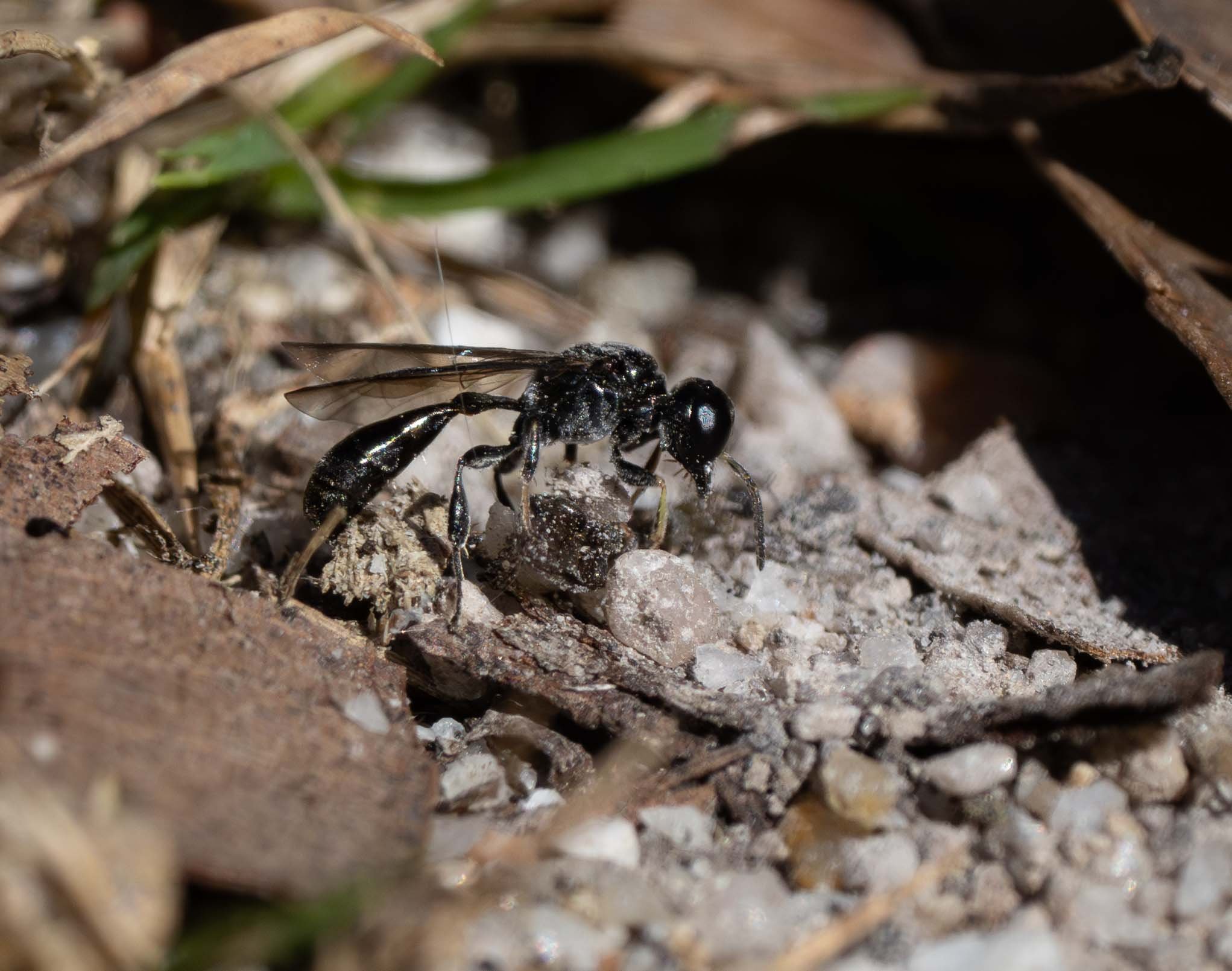
… but then she started hauling rocks. It seems her burrow entrance had collapsed. Did we accidentally tread on it? Perhaps a passing wallaby had done the damage.
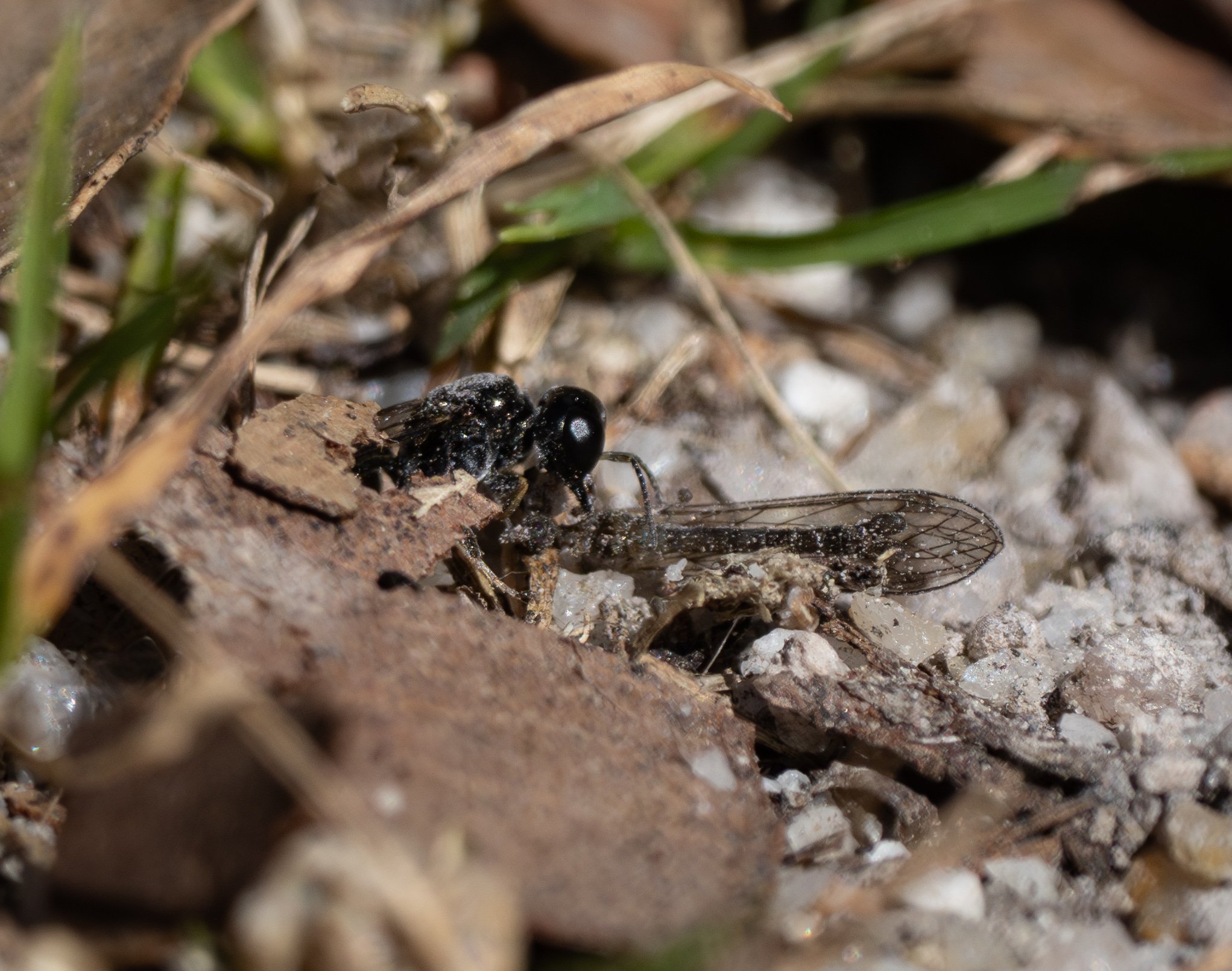
After a few minutes she dragged her prey out of sight beneath a nearby leaf, and then resumed work at her burrow. She eventually succeeded – the following day we saw her coming and going from the original nest.
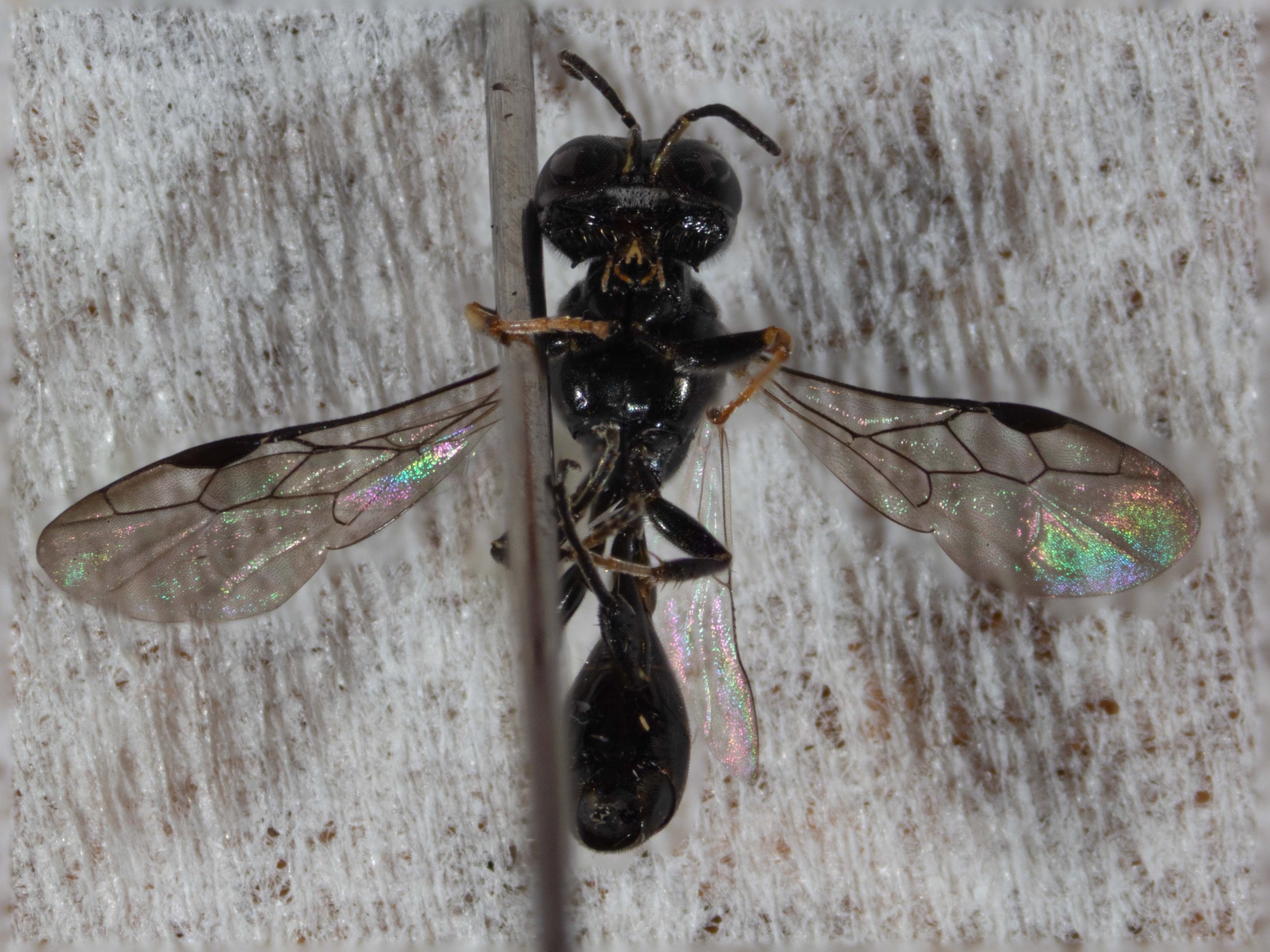
Museum records show only a single specimen of Rhopalum coriolum in collection – the original female collected a century ago near Sydney, and upon which the species was described (i.e. the holotype). We collected two females last year and another two this season. Once we’ve finished writing the paper, all will be deposited in Australian museums.
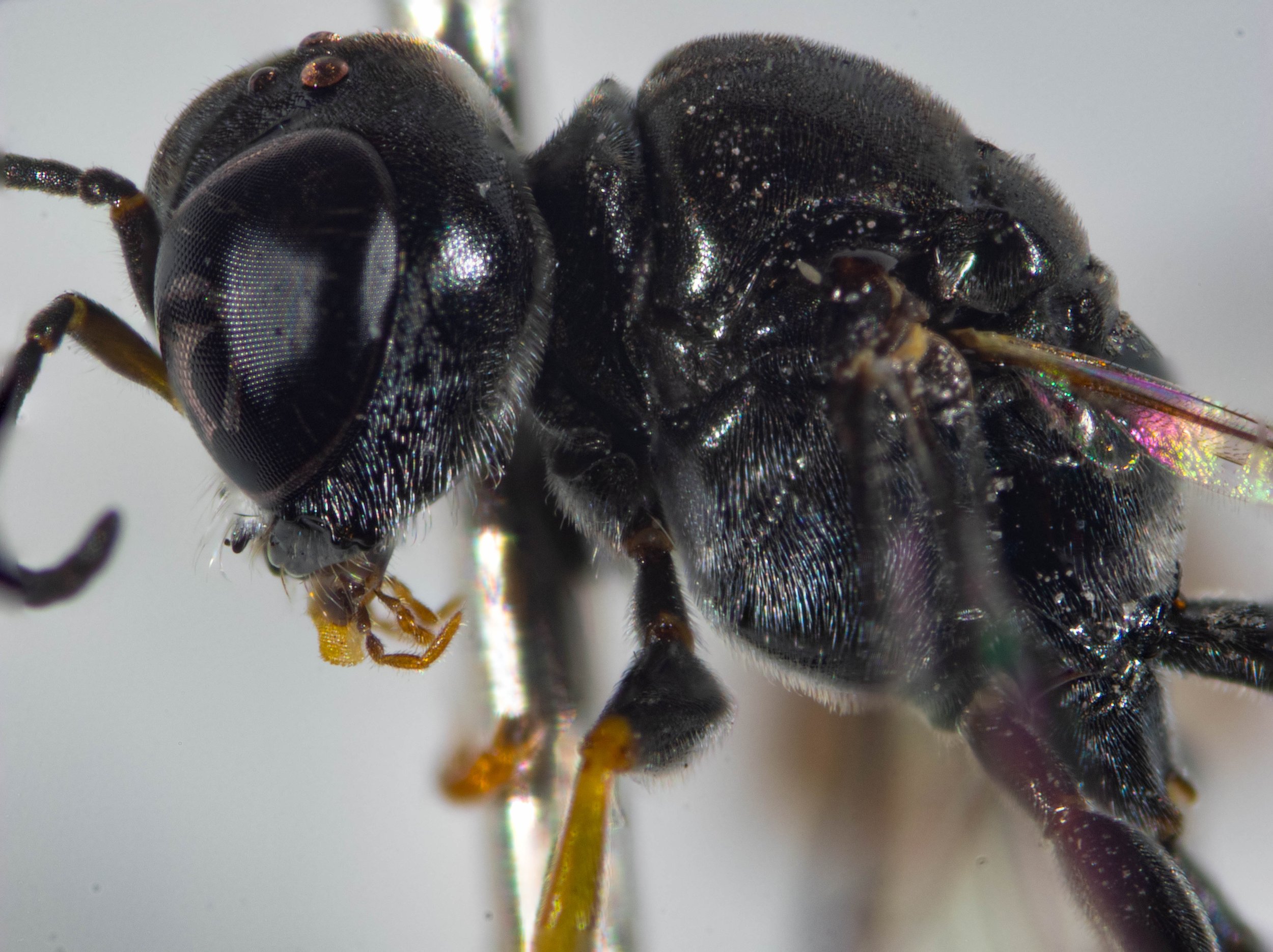
The differences between species are subtle, and require close-up photography. Rhopalum variitarse, a species known from Canberra, is very similar … but there are clear differences in fine structure and colour details.
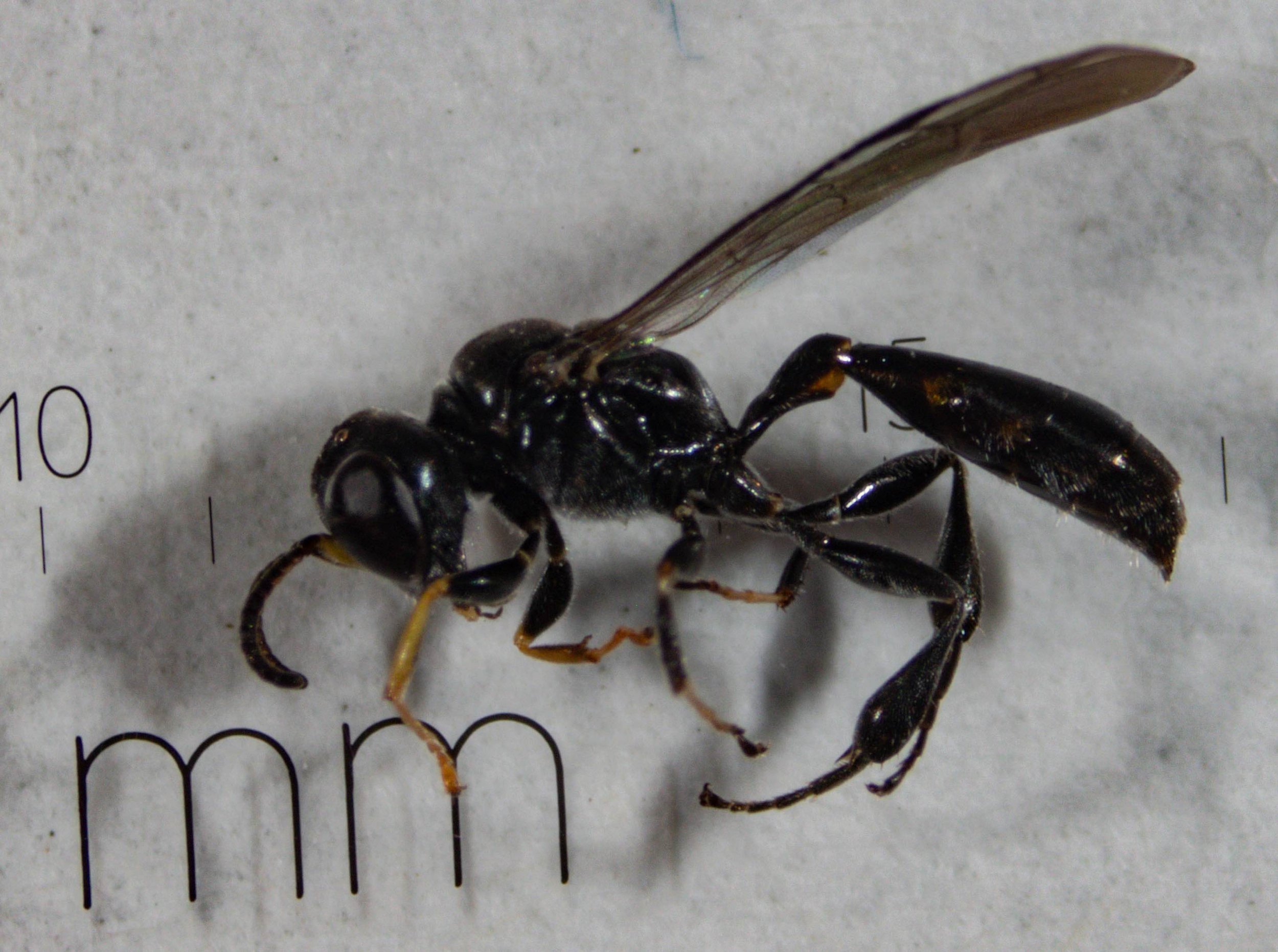
This may be the first male ever collected. This one, and another we collected, will be sent to a museum once we have fully described and photographed them.










